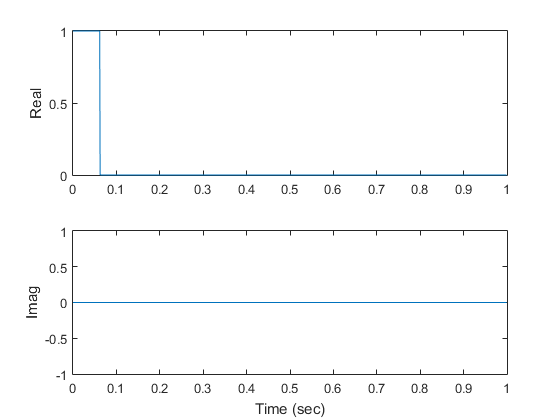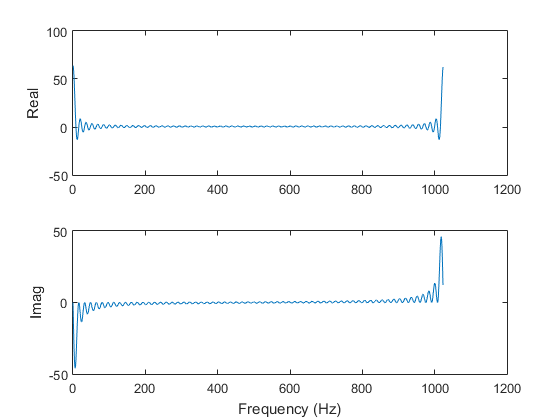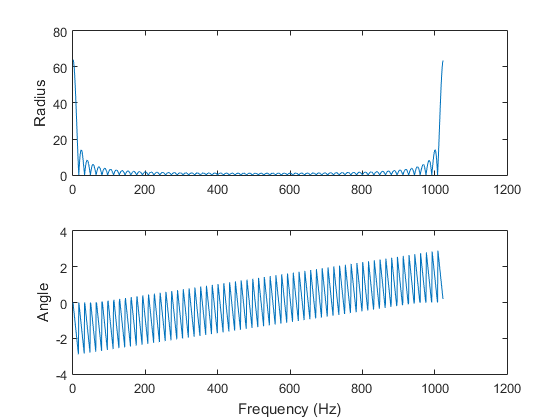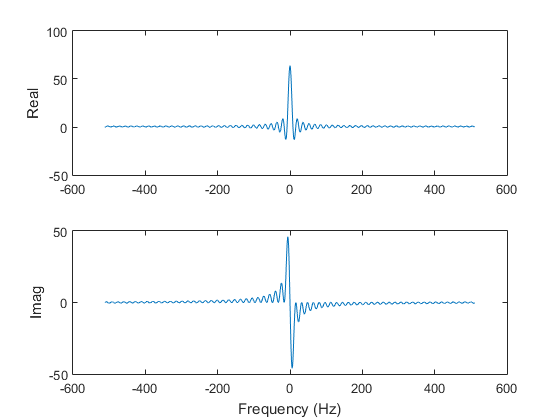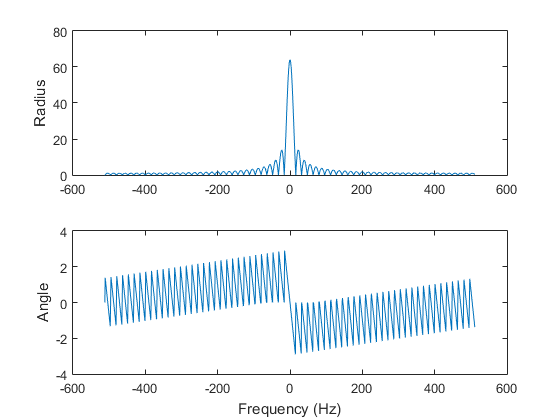Contents
clear all, close all t = 0:1/1024:1; t = t(1:1024); f = 0:1023;
The first example is a signal that contains three harmonics.
Write the code that does the discrete Fourier transform.
Compare your frequency-domain results with the ones generated from MATLAB function fft.
f1 = 10; f2 = 80; f3 = 150; x1 = rand(1)*exp(sqrt(-1)*2*pi*f1*t) + rand(1)*exp(sqrt(-1)*2*pi*f2*t) + rand(1)*exp(sqrt(-1)*2*pi*f3*t); y1 = fft(x1); figure(1) subplot(2,1,1) plot(t,real(x1)) ylabel('Real') subplot(2,1,2) plot(t,imag(x1)) ylabel('Imag') xlabel('Time (sec)') figure(2) subplot(2,1,1) plot(f,real(y1)) ylabel('Real') subplot(2,1,2) plot(f,imag(y1)) ylabel('Imag') xlabel('Frequency (Hz)') figure(3) subplot(2,1,1) plot(f,abs(y1)) ylabel('Radius') subplot(2,1,2) plot(f,angle(y1)) ylabel('Angle') xlabel('Frequency (Hz)')
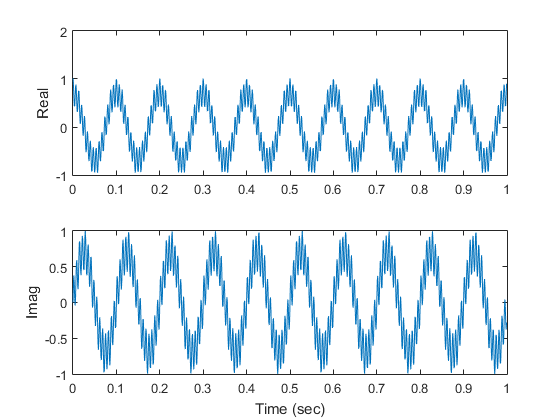
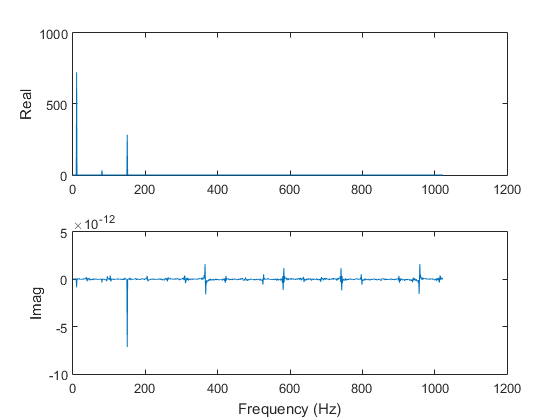
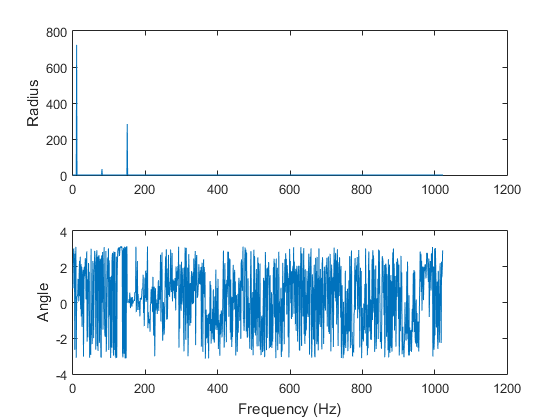
The second example is a rectangular (box) function. Therefore, its Fourier transform is a sinc function.
Write the code that does the discrete Fourier transform.
Compare your frequency-domain results with the ones generated from MATLAB function fft.
x2 = [ones(64,1); zeros(960,1)]; y2 = fft(x2); figure(4) subplot(2,1,1) plot(t,real(x2)) ylabel('Real') subplot(2,1,2) plot(t,imag(x2)) ylabel('Imag') xlabel('Time (sec)') figure(5) subplot(2,1,1) plot(f,real(y2)) ylabel('Real') subplot(2,1,2) plot(f,imag(y2)) ylabel('Imag') xlabel('Frequency (Hz)') figure(6) subplot(2,1,1) plot(f,abs(y2)) ylabel('Radius') subplot(2,1,2) plot(f,angle(y2)) ylabel('Angle') xlabel('Frequency (Hz)') f2 = f - 512; figure(7) subplot(2,1,1) plot(f2,real(fftshift(y2))) ylabel('Real') subplot(2,1,2) plot(f2,imag(fftshift(y2))) ylabel('Imag') xlabel('Frequency (Hz)') figure(8) subplot(2,1,1) plot(f2,abs(fftshift(y2))) ylabel('Radius') subplot(2,1,2) plot(f2,angle(fftshift(y2))) ylabel('Angle') xlabel('Frequency (Hz)')
